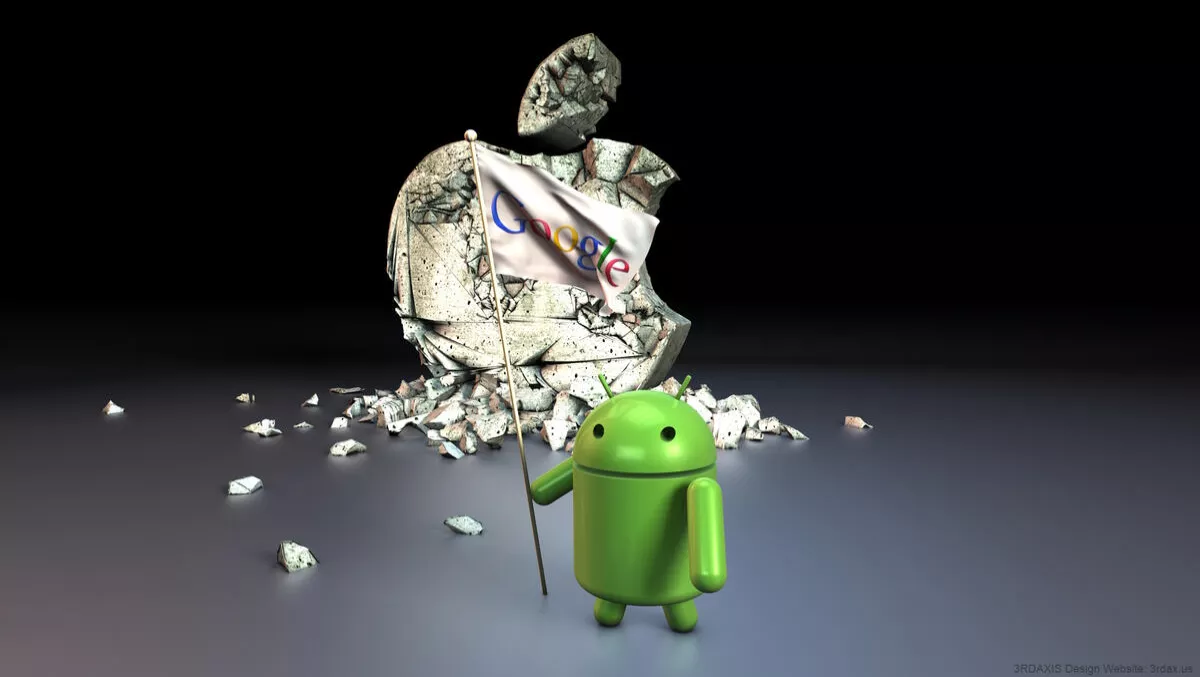
Android and Windows grow as iOS slows…
Apple vs. Android. Nothing new here you may think. But throw Microsoft and Windows Phone into the mix and we now have the basis for a competitive operating system market.
Despite beating Wall Street expectations in terms of shipment volumes, Apple's share in the worldwide smartphone operating system market has posted a year-over-year decline during the second quarter of 2013.
Notably however, Android and Windows Phone both managed slight increases during the same period.
"The iOS decline in the second quarter aligns with the cyclicality of iPhone," says Ramon Llamas, Mobile Phone team Research manager, IDC.
"Without a new product launch since the debut of the iPhone 5 nearly a year ago, Apple's market share was vulnerable to product launches from the competition.
"But with a new iPhone and revamped iOS coming out later this year, Apple is well-positioned to re-capture market share."
According new IDC research, vendors shipped a total of 236.4 million smartphones in Q2, up 51.3% from the 156.2 million units shipped in Q2. Second quarter shipments grew 9.3% when compared to the 216.3 million units shipped in Q1.
"Last quarter we witnessed Windows Phone shipments surpassing BlackBerry and the trend has continued into the second quarter," says Ryan Reith, Mobility Tracker Programs manager, IDC.
"Nokia has clearly been the driving force behind the Windows Phone platform and we expect that to continue.
"However, as more and more vendors enter the smartphone market using the Android platform, we expect Windows Phone to become a more attractive differentiator in this very competitive market segment."
Smartphone OS highlights
IDC claims Android maintained its leadership position, with strong contributions from Samsung and its Galaxy S4.
Not to be overlooked however were LG and Chinese vendors Huawei, Lenovo, and ZTE, which each recorded double-digit shipment volumes in the millions.
Combined, these vendors accounted for 62.5% of all Android-powered smartphone shipments during the quarter.
Still, the remaining vendors within the Android ecosystem should not be overlooked, as many have developed a strong local presence within key developing markets.
iOS finished the quarter as the clear number two operating system, showing that, even without new product launches, demand remains strong.
Moreover, Apple added new mobile operators to its camp, boosting short-term volumes and cementing long-term end-user relationships.
What remains to be seen according to IDC is how the new iOS 7 will be received once it reaches the market later this year, as much of the look and feel of the user interface has been revamped.
Windows Phone posted the largest year-over-year increase among the top five smartphone platforms, and in the process reinforced its position as the number three smartphone operating system.
Driving this result was Nokia, which released two new smartphones and grew its presence at multiple mobile operators.
But beyond Nokia, Windows Phone remained a secondary option for other vendors, many of which have concentrated on Android. By comparison, Nokia accounted for 81.6% of all Windows Phone smartphone shipments during Q2..
BlackBerry saw its market share decline during the quarter, reaching levels not seen in the history of IDC's Mobile Phone Tracker.
However, BlackBerry has shown steady progress since the launch of its BB10 platform, which has grown to three models, additional mobile operators, and a greater presence within its total volumes. It is still early days for the platform, however, and BlackBerry will need time and resources to evangelise more end users according to IDC.
Linux, with few vendors supporting the open source platform and virtually no global presence, barely scraped together a single percentage point of market share during the quarter.
Most vendors have transitioned to Android and those that remain have limited presence within specific markets.
It should be noted that IDC includes Linux-branded shipments in these numbers, and excludes Android-branded shipments. Several other branded variations of Linux, including Firefox, Tizen, and SailFish, are expected to launch later this year, providing a potential boost to volumes and market share.
Top smartphone OS (market share Q2):
• Android: 79.3%• iOS: 13.2%• Windows: 3.7%• BlackBerry: 2.9%• Linux: 0.8%• Symbian: 0.2%• Others: 0.0%

